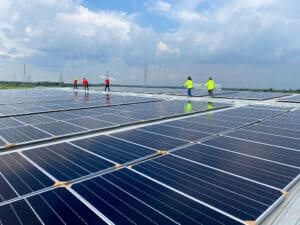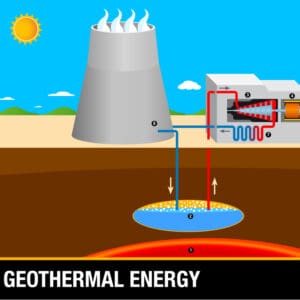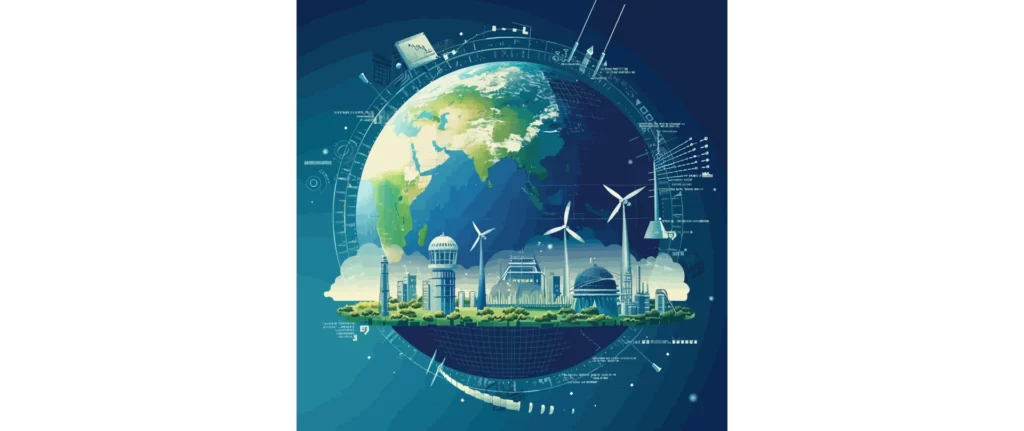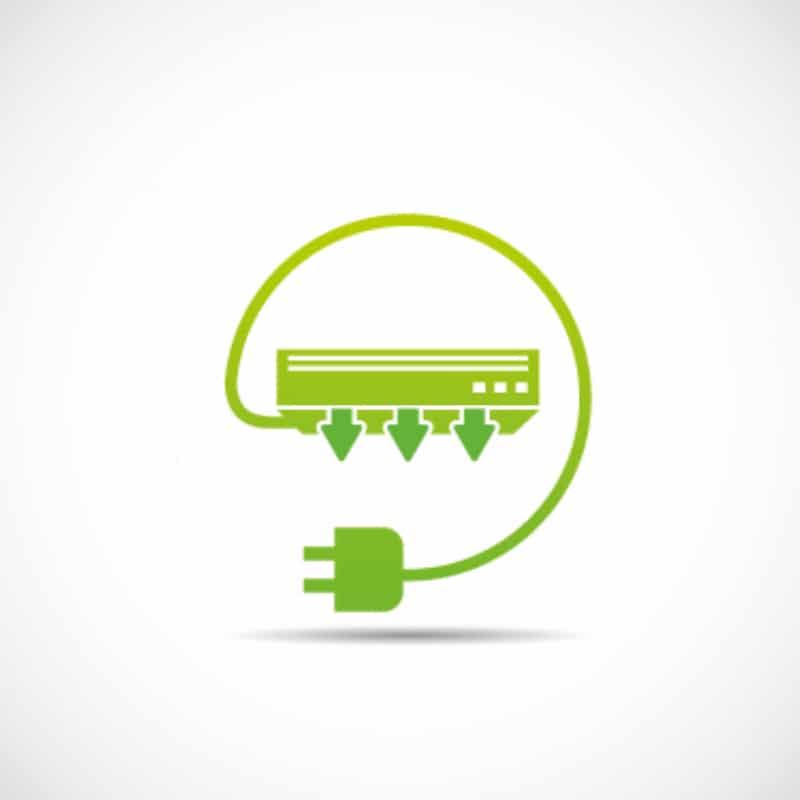Green Air Conditioning
As global temperatures continue to rise, the demand for air conditioning is increasing at an unprecedented rate.
However, traditional air conditioning systems, while providing much-needed relief, come with high energy consumption and significant carbon emissions.
The quest for sustainable solutions has led to the development of green air conditioning technologies that promise to cool our spaces without warming the planet.
This article explores the innovative approaches to green air conditioning, detailing how each technology works, its benefits, challenges, and the role it plays in the broader context of climate change mitigation.

Solar Energy: A Bright Solution for Sustainable Cooling
Solar energy emerges as a key player in green cooling technologies, offering a way to power air conditioning systems with less reliance on fossil fuels.
Here's a quick overview of how solar-powered air conditioning works, its benefits, and the challenges it faces:
Mechanics:
- Photovoltaic Systems: Convert sunlight directly into electricity to power AC units.
- Solar Thermal Systems: Use the sun's heat to cool buildings through heat exchange.
Benefits:
- Economic: Lowers electricity bills and may be eligible for tax credits and incentives.
- Environmental: Reduces greenhouse gas emissions and uses renewable energy.
Challenges:
- Initial Costs: High upfront investment in solar panels and systems.
- Energy Storage: Need for batteries or other technologies to ensure continuous operation.
Solar-powered air conditioning presents a sustainable solution for cooling, balancing initial costs with long-term economic and environmental gains.

Geothermal Cooling: Harnessing the Earth's Stable Temperatures
Geothermal cooling leverages the Earth's stable underground temperatures for eco-friendly building temperature regulation.
It uses geothermal heat pumps (GHPs) to transfer heat, cooling buildings in the summer by moving heat underground and warming them in winter by extracting the earth's warmth.
This system is known for its high efficiency, achieving 300% to 600% efficiency rates, significantly higher than air-source heat pumps, while also reducing reliance on fossil fuels and decreasing greenhouse gas emissions.
The operational mechanics involve two main types: closed-loop systems, which circulate a fluid through underground pipes, and open-loop systems, which utilize water from a well or lake for heat exchange.
Key considerations for geothermal cooling include the higher initial costs associated with drilling and installation, geographical and soil condition constraints that can affect the system's effectiveness, and the need for sufficient land to accommodate the underground piping system.
Despite these challenges, the long-term benefits of geothermal cooling, such as significant energy savings, minimal maintenance, and environmental sustainability, establish it as a leading technology for the future of green air conditioning and heating.

Ice-Powered Cooling: Innovation in Thermal Energy Storage
Ice-powered cooling offers a groundbreaking solution aimed at mitigating peak electricity demand and optimizing energy consumption by leveraging off-peak hours. This innovative approach to air conditioning involves several key components and benefits, as well as challenges to its broader implementation:
- Technology Behind Ice-Powered Cooling:
- Ice Making: During off-peak hours, typically at night, the system freezes water in large tanks to create ice.
- Energy Storage: The ice serves as a form of thermal energy storage, effectively banking cooling capacity for later use.
- Daytime Cooling: During peak hours, when energy demand and prices are higher, the stored ice is used to cool the building, reducing the need for electricity-intensive air conditioning.
- Benefits of Ice-Powered Cooling:
- Reduced Energy Costs: By shifting the energy-intensive process of cooling to off-peak hours, buildings can benefit from lower energy rates.
- Decreased Strain on the Electrical Grid: This technology helps flatten demand spikes, contributing to a more stable and efficient power grid.
- Environmental Impact: Reducing peak electricity demand indirectly leads to a reduction in carbon emissions associated with power generation.
- Enhanced Operational Efficiency: Buildings can maintain comfortable temperatures without the continuous operation of energy-intensive cooling systems during the day.
- Operational Mechanics:
- Integration with Existing Systems: Ice-powered cooling can often be integrated with existing HVAC systems, enhancing their efficiency.
- Automated Controls: Modern systems use smart technology to manage the freezing and thawing cycles, optimizing the use of stored ice for cooling.
- Potential Obstacles in Widespread Adoption:
- Initial Installation Cost: The upfront cost for installing ice storage systems can be higher than traditional air conditioning systems.
- Space Requirements: Adequate space for the ice storage tanks is necessary, which may be a limiting factor in densely populated areas or buildings with limited available space.
- Market Awareness: There's a need for greater awareness and understanding among building owners and managers about the benefits and operational savings that ice-powered cooling systems can offer.
Ice-powered cooling represents a significant step forward in the development of sustainable air conditioning technologies.
By addressing the operational challenges and increasing awareness of its benefits, ice-powered cooling has the potential to become a key player in the global effort to reduce energy consumption and mitigate the environmental impact of cooling systems.

Hydrofluorocarbon-Free Refrigerants: A Leap Towards Environmental Sustainability
The move away from traditional refrigerants with high global warming potential (GWP) to hydrofluorocarbon-free (HFC-free) alternatives marks a pivotal shift in environmental stewardship.
Substances like R1234yf, CO2, and hydrocarbons significantly lower the environmental impact of air conditioning and refrigeration systems by offering reduced GWP and zero ozone depletion potential.
Key Points:
- Environmental Impact: HFC-free refrigerants drastically reduce the greenhouse gas effect and support efforts to heal the ozone layer.
- Regulatory Support: The Kigali Amendment to the Montreal Protocol mandates a global reduction in HFC use, accelerating the adoption of low-GWP refrigerants.
- Transition Challenges: Adapting to HFC-free refrigerants involves equipment redesign for safety and compatibility, potentially higher initial costs, and industry-wide training for new technologies.
Despite these hurdles, the transition to HFC-free refrigerants is essential for reducing climate change impact and advancing towards a more sustainable future in cooling technologies.

The Role of Technology and Innovation in Green Air Conditioning
Emerging technologies and innovations are at the forefront of transforming green air conditioning.
Advances in materials science, like phase change materials (PCMs) for thermal energy storage, alongside smart technology, are paving the way for more efficient and sustainable cooling systems.
These innovations enable precise control over cooling systems, optimize energy use, and significantly reduce environmental impact.
Policy, Incentives, and the Path Forward
Effective policies and incentives are crucial for the widespread adoption of green air conditioning technologies.
Government regulations, subsidies, and tax incentives play a pivotal role in encouraging the use of sustainable cooling solutions.
International cooperation and commitment to environmental goals are essential in promoting these technologies, highlighting the interconnectedness of technology, policy, and environmental sustainability.
Embracing a Cooler, Greener Future
Green air conditioning technologies stand as a testament to the progress towards sustainable cooling.
These advancements not only aim to reduce energy consumption and environmental impact but also enhance human comfort in an eco-friendly manner.
The journey towards sustainable cooling is a collaborative effort, requiring ongoing innovation, supportive policies, and global participation.
By embracing these green technologies, we can look forward to a future where cooling systems contribute positively to our planet's health.
Source:
Green Air Conditioning – Using indoor living wall systems as a climate control method

